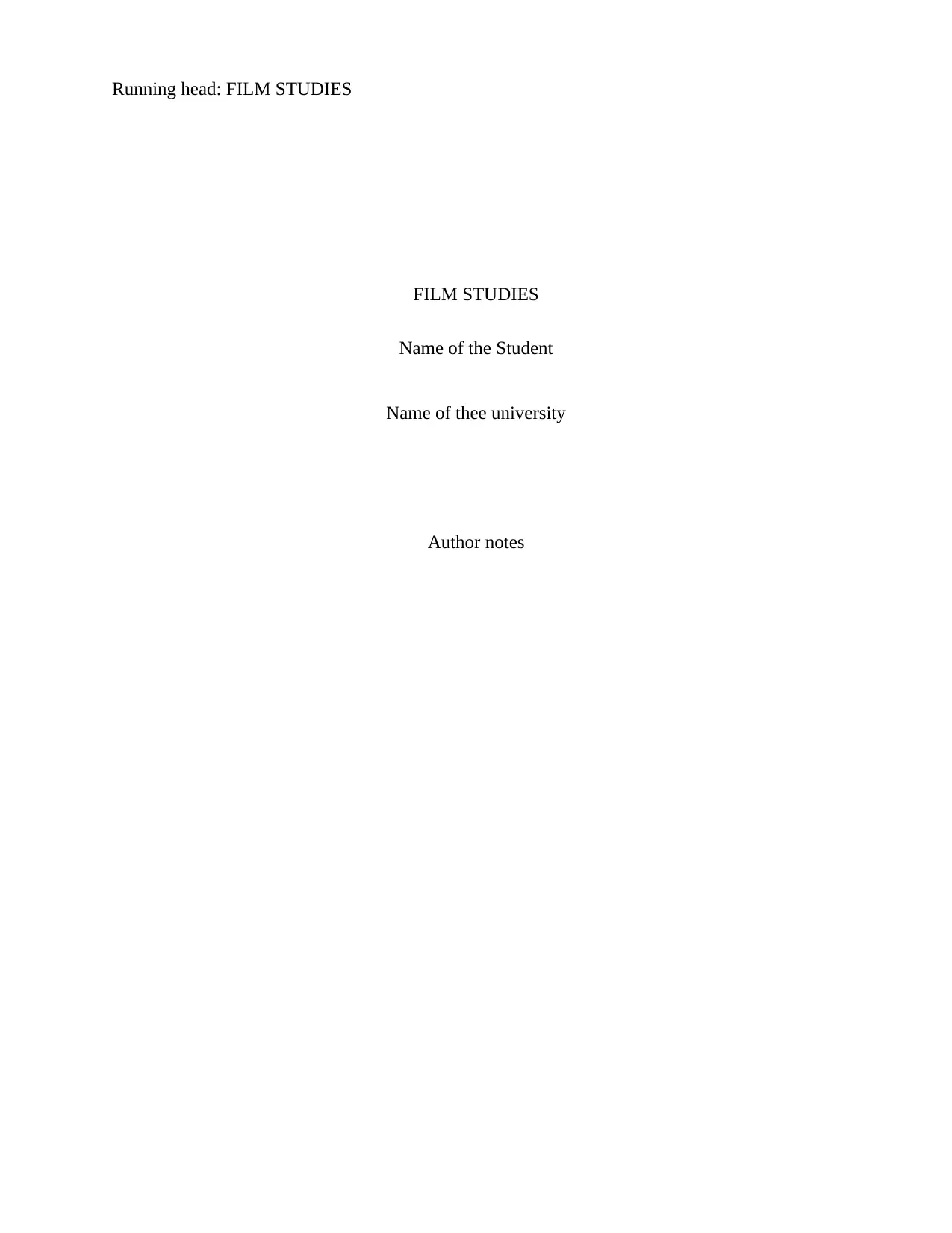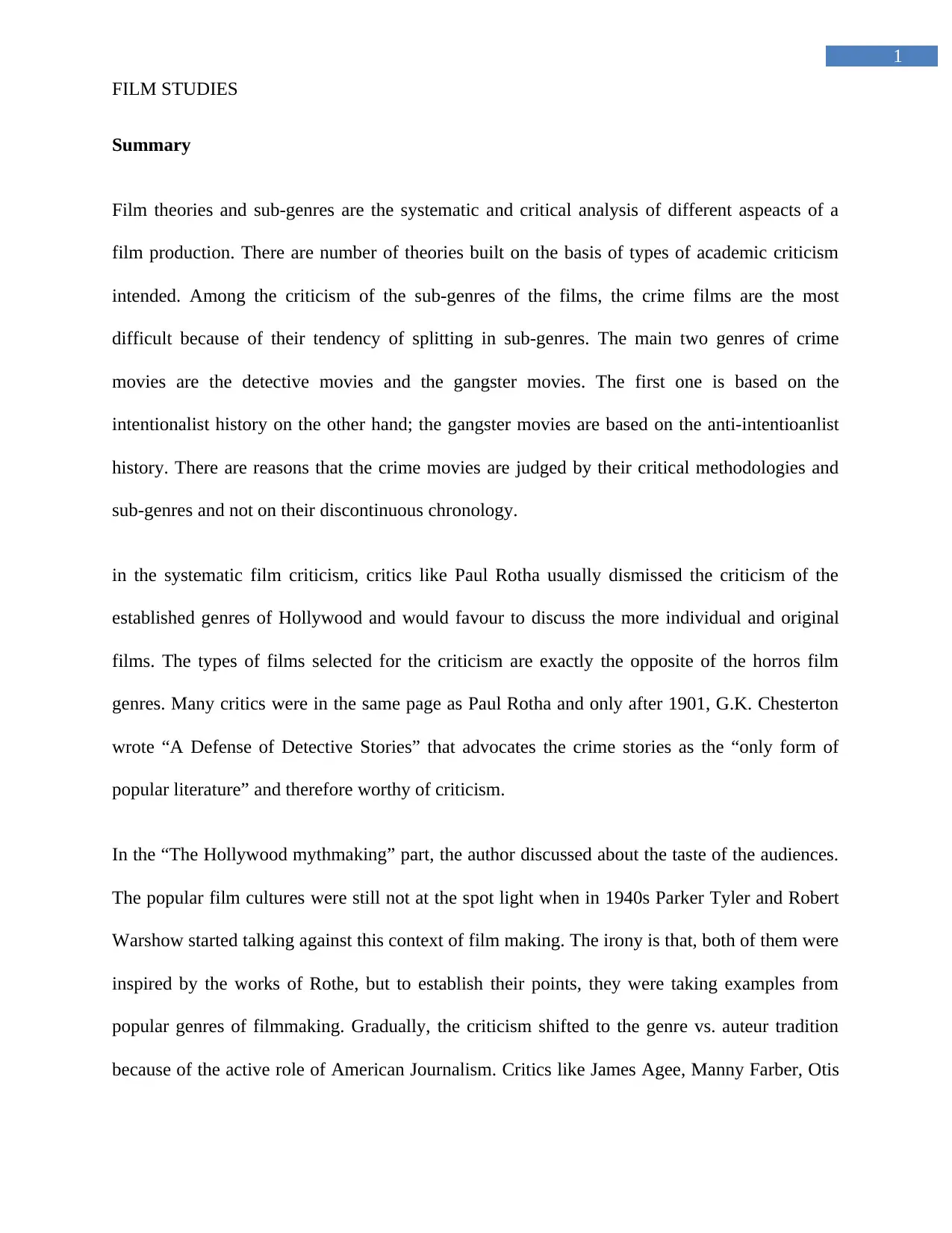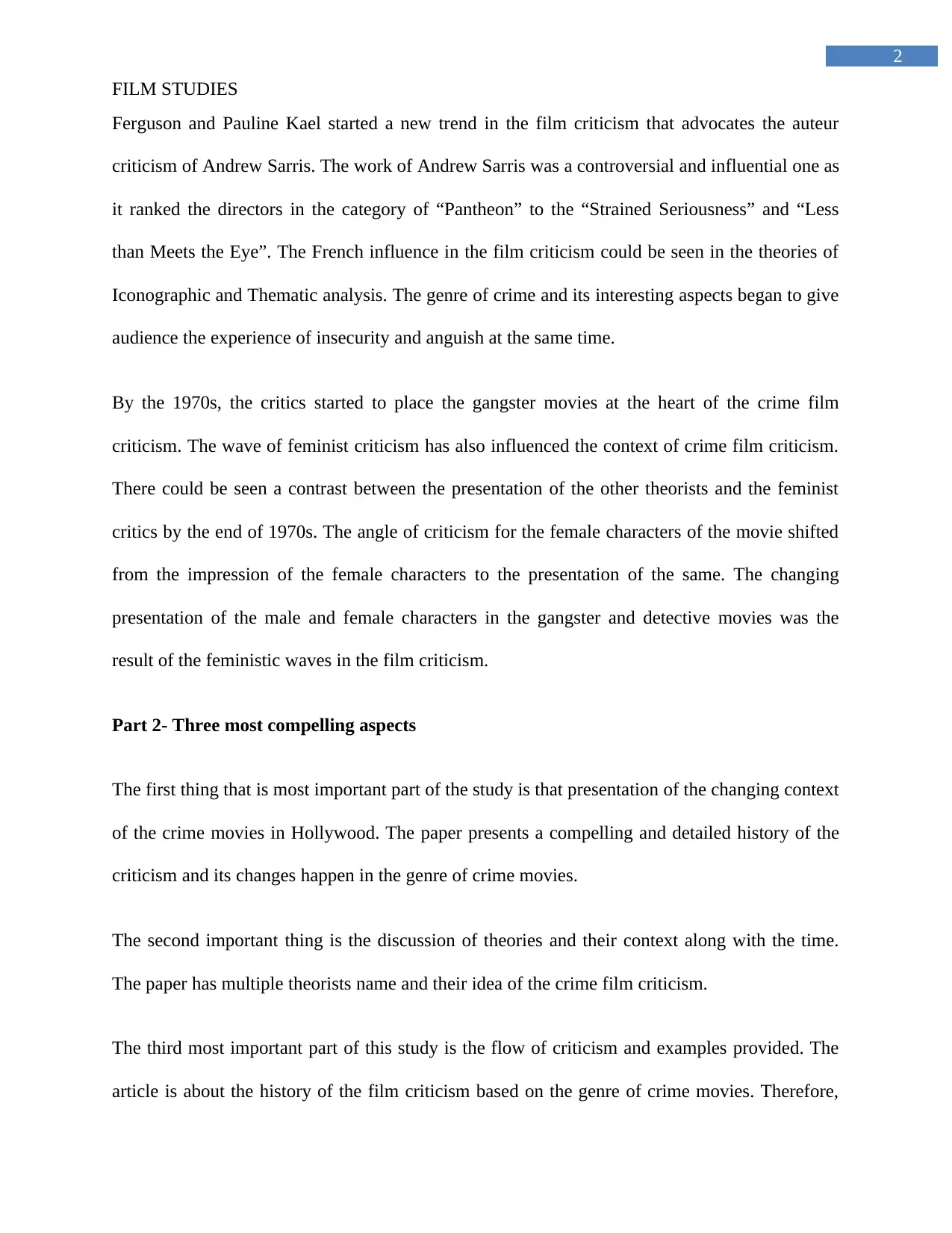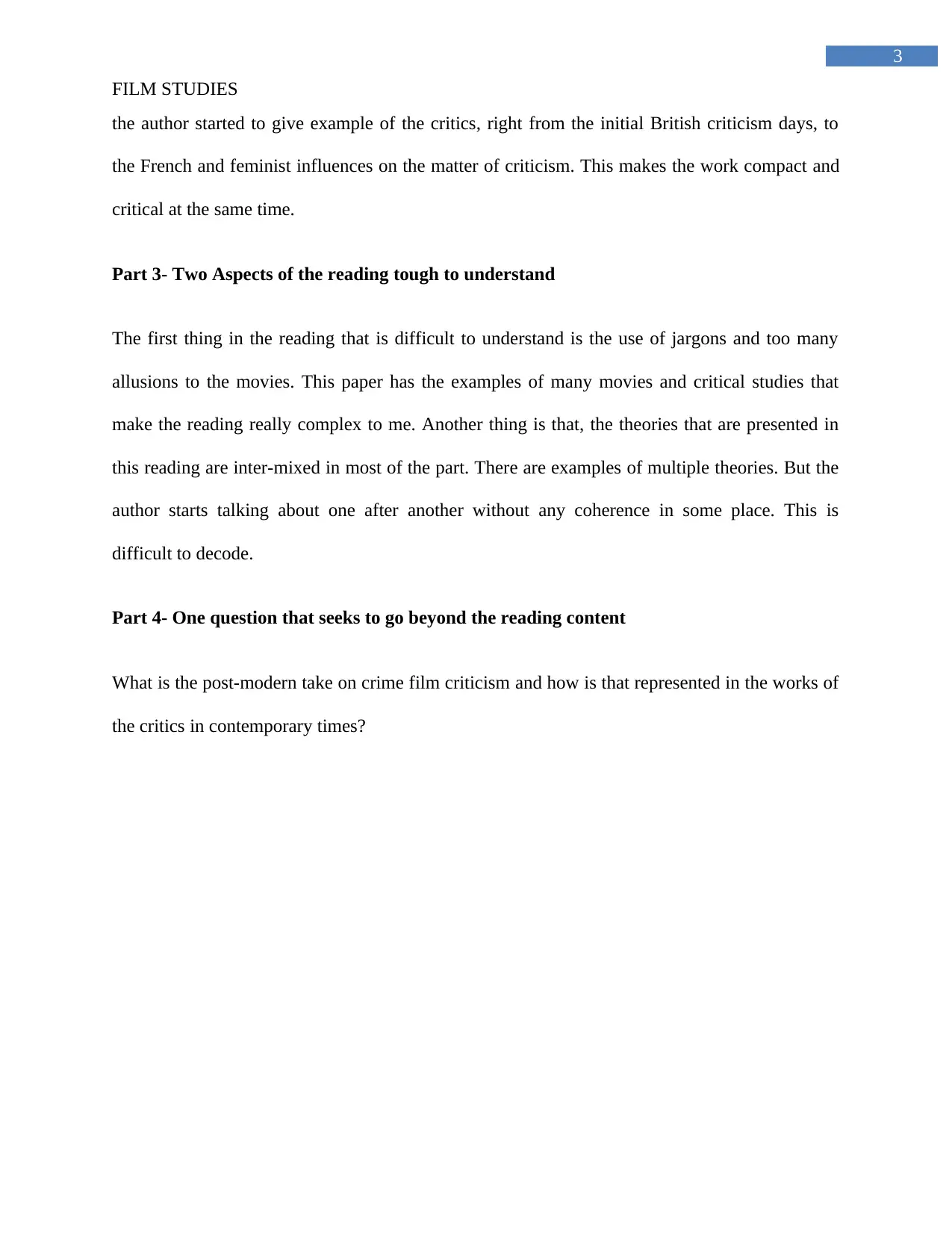Film Studies Essay: Exploring Crime Film Criticism and its Evolution
VerifiedAdded on 2022/08/12
|4
|863
|34
Essay
AI Summary
This essay provides a comprehensive analysis of crime film criticism, tracing its evolution and key methodologies. It begins by defining film theories and sub-genres, focusing on crime films and their division into detective and gangster movies. The essay explores different critical approaches, including auteur criticism, thematic analysis, and feminist perspectives, highlighting the influence of various critics and theorists. It examines the historical context of crime film criticism, from early British commentary to the impact of French and feminist influences. The essay also discusses the challenges in understanding the subject, such as the use of jargon and the intermixing of theories. Finally, it poses a question about the post-modern take on crime film criticism. This paper covers the history of film criticism based on the genre of crime movies, providing examples of critics from the initial British criticism days, to the French and feminist influences on the matter of criticism.
1 out of 4





![[object Object]](/_next/static/media/star-bottom.7253800d.svg)